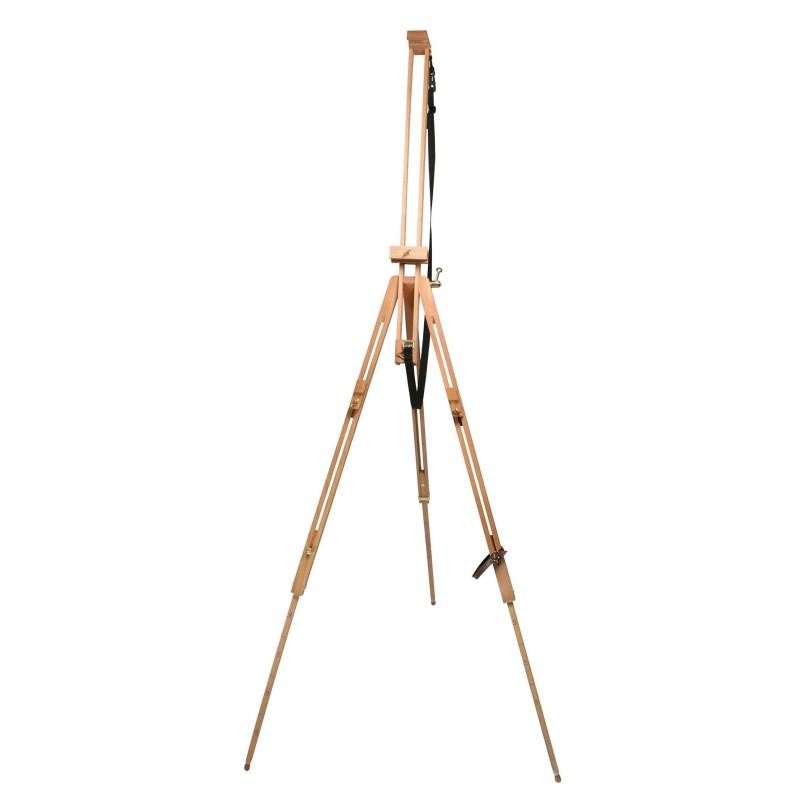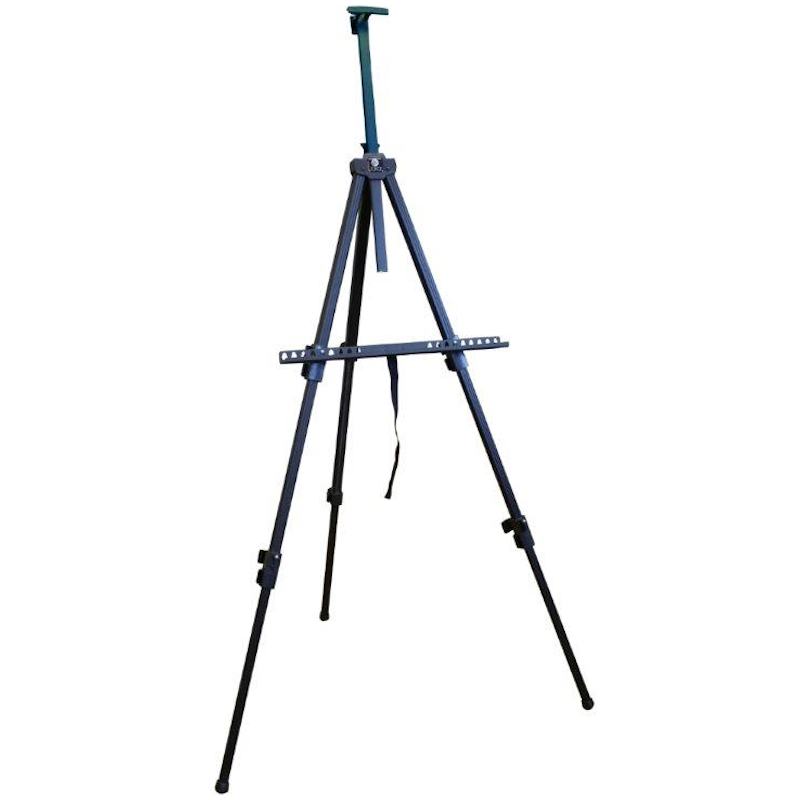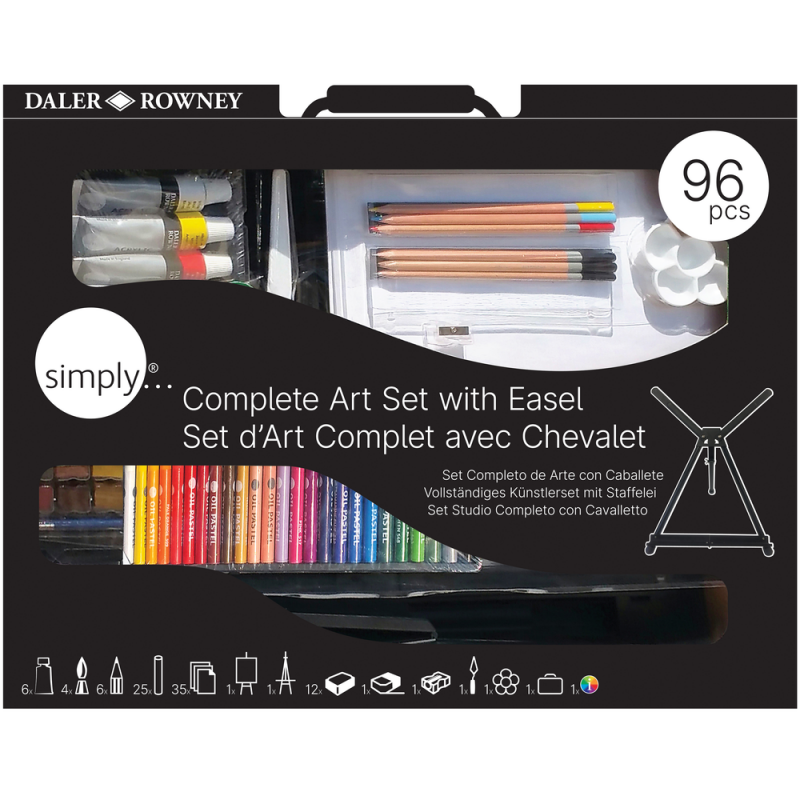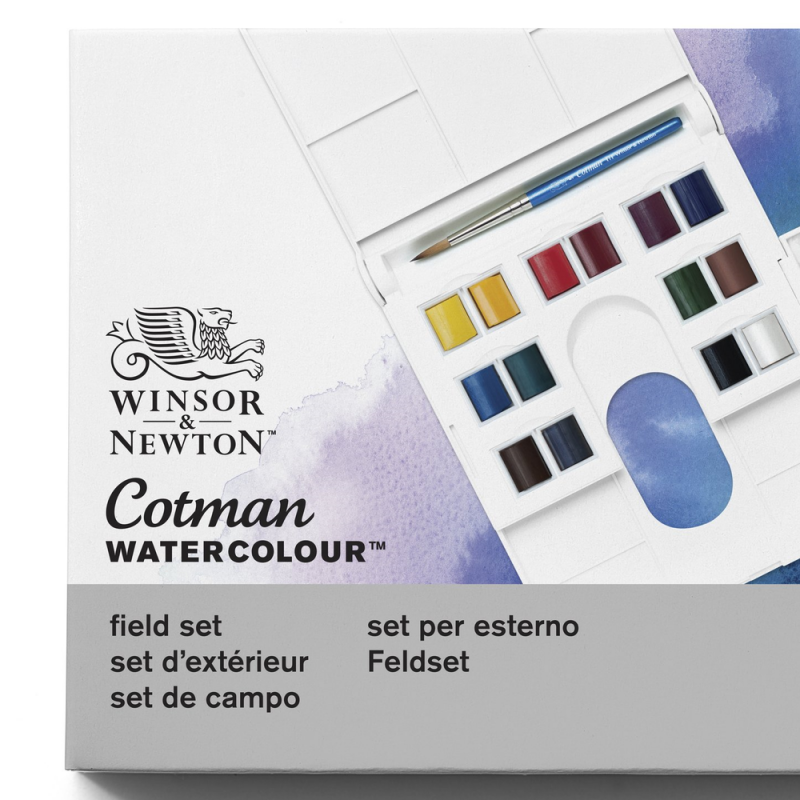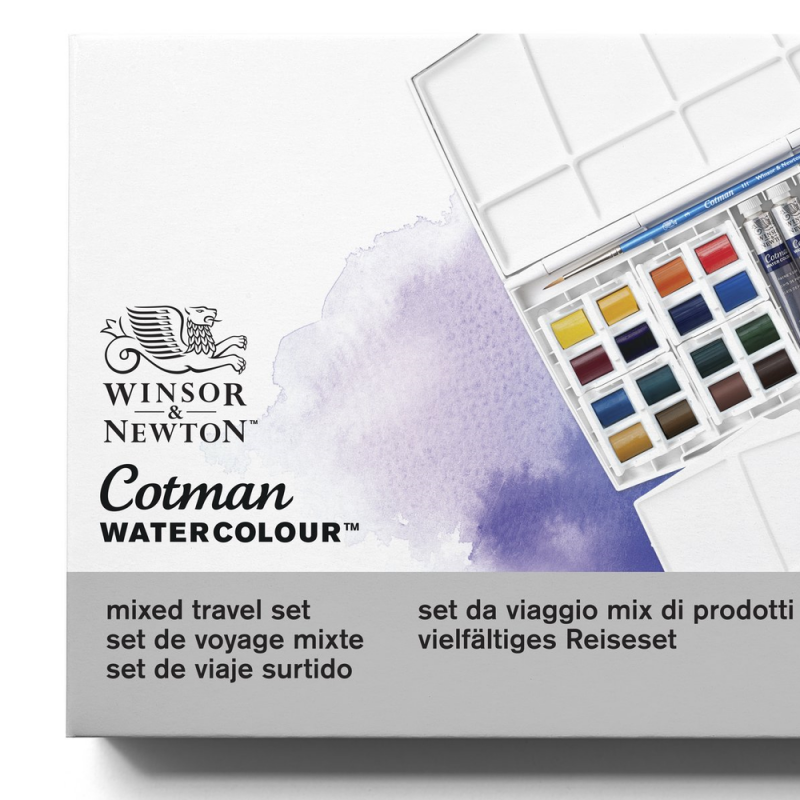Winsor & Newton - Cotman Watercolour Field Set (15pc)
The perfect introduction to Cotman Watercolours
14 brilliant colours in half-pan form
High quality pigments at an affordable price
Great for smaller applications of colour
Ideal for outdoor use
Please Note: Outer packaging may differ
More than any other medium, watercolour relies upon the variable characteristics of the pigments used. Offering a carefully chose spectrum of 40 colours, Winsor & Newton's Cotman Water Colours have been created using both high quality pigments and more affordable alternatives. Ideal for the outdoor artist, this pocket-sized box includes a sliding palette, dish, brush and 14 half pans.
Colours included in this set: Lemon Yellow Hue, Cadmium Yellow Hue, Cadmium Red Hue, Cadmium Red Pale Hue, Alizarin Crimson Hue, Purple Lake, Ultramarine, Cerulean Blue Hue, Sap Green, Viridian Hue, Yellow Ochre, Burnt Sienna, Burnt Umber and Chinese White.
What is watercolour?
Watercolour is produced by the combination of a pigment with a binder, usually Gum Arabic. This is then applied, with water, to a support such as watercolour paper. The pigment fixes to the support upon evaporation of the water. Click here for further product information on Winsor & Newton's Water Colour range.
Watercolours are water-based, so brushes used to apply the watercolour paint need only mild soap and water to clean them after use. This video illustrates how simple it is to clean and care for watercolour brushes.
Which is better: tube watercolour or half pans?
There is no difference in quality between tube watercolour and half pans, the difference is in the application. Designed for ease of travel, half pan colours are perfect to use on the go. Half pans are popular with artists who paint infrequently, as the paints may be left for a long periods of time between uses, without affecting their quality.
One of the main features of the tubes is controlled measurement of use, applying as little or as much as required by the artist. Big spaces are more easily covered using tube water colour than when using a half pan.
Which surfaces best support Water Colour?
When choosing a watercolour surface, it is important to consider the absorbency, colour and stability of the paper. Our range of Watercolour Paper & Pads offers an extensive choice of size and style, to meet artists' every requirement.
Which brushes are best for watercolour painting?
Watercolour painting requires the brush to hold large amounts of water and paint. Natural hair brushes, particularly Red Sable brushes, tend to be favoured by artists working with watercolour. With a middle body able to hold a good reservoir of colour, Sable hair has excellent spring and resilience. The hairs are particularly strong at the brush's fine tip, allowing the brush to be used both delicately and aggressively. Advancements in the production of synthetic hair have resulted in a rise in popularity of Synthetic Watercolour Brushes, especially if price and durability are an issue.
Which techniques work best with watercolour?
The following links show some new techniques on how watercolours can be used:
Water Colour Revolution
Techniques For Contemporary Water Colour
Focus On Water Colour Illustration Techniques
Who are Winsor & Newton?
In 1832, William Winsor and Henry Newton introduced the first moist water colours to the world. Today, Winsor and Newton remain the premier choice for artists, offering a wide variety of fine art supplies including: oil, water colour, acrylic and alkyd paints, pastels, artists' brushes, canvases, papers and portfolios.
